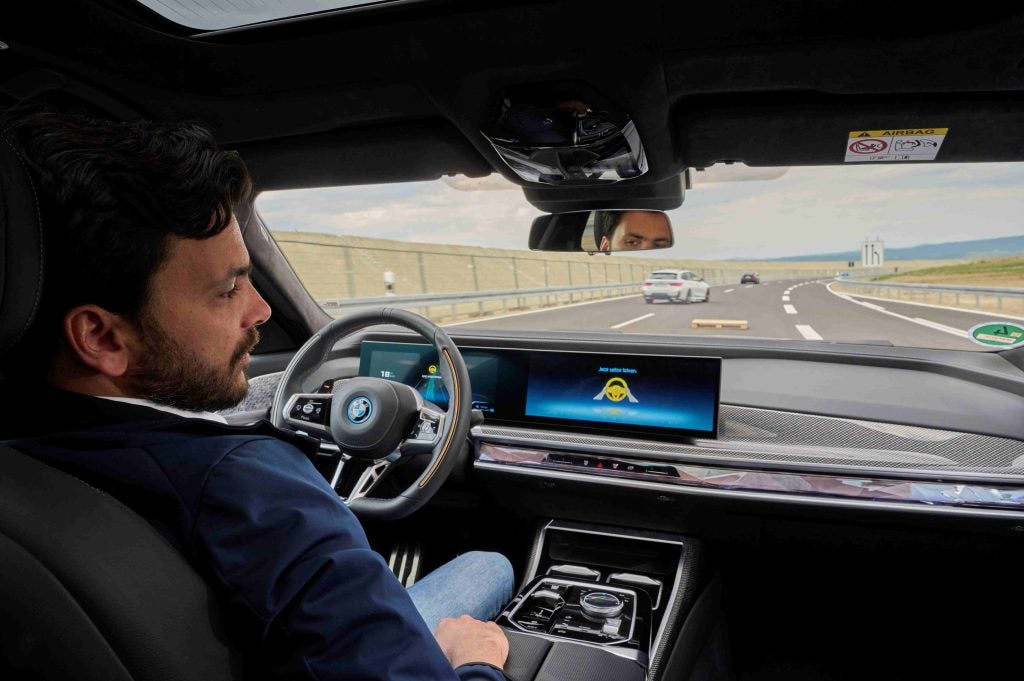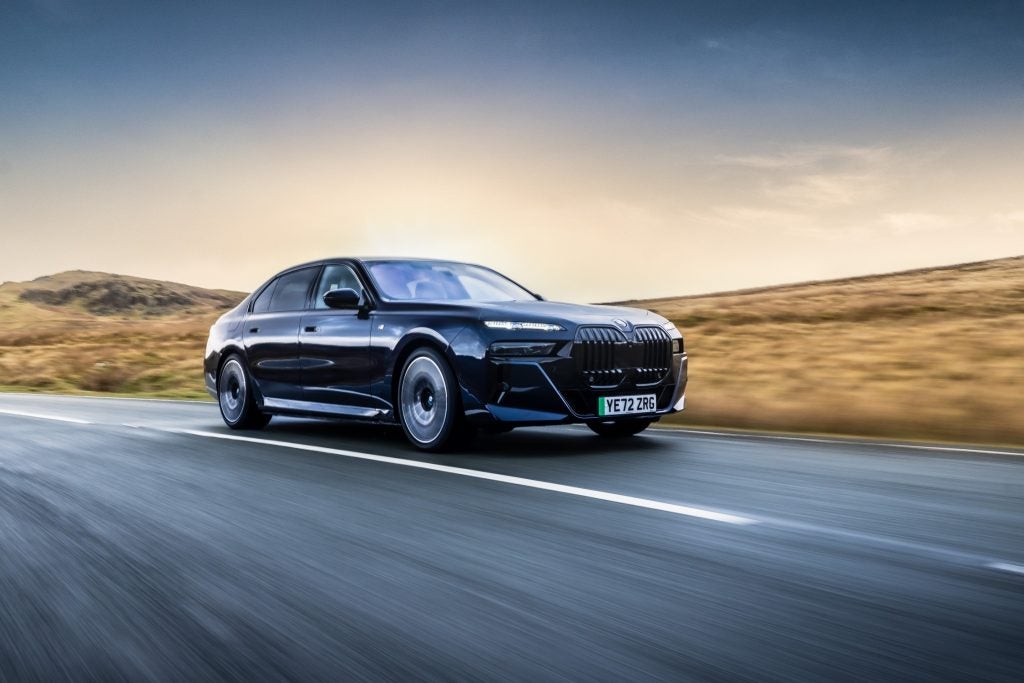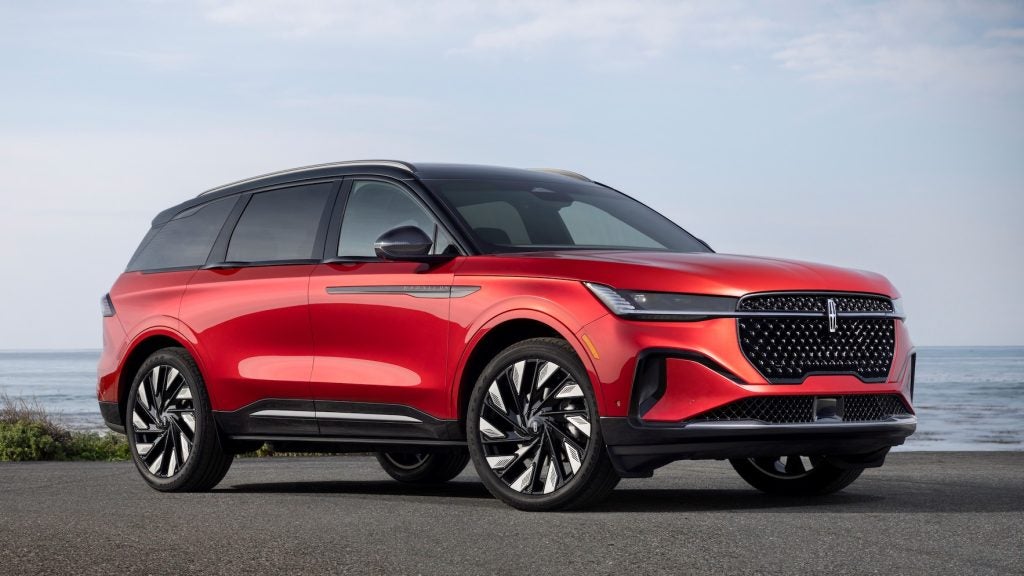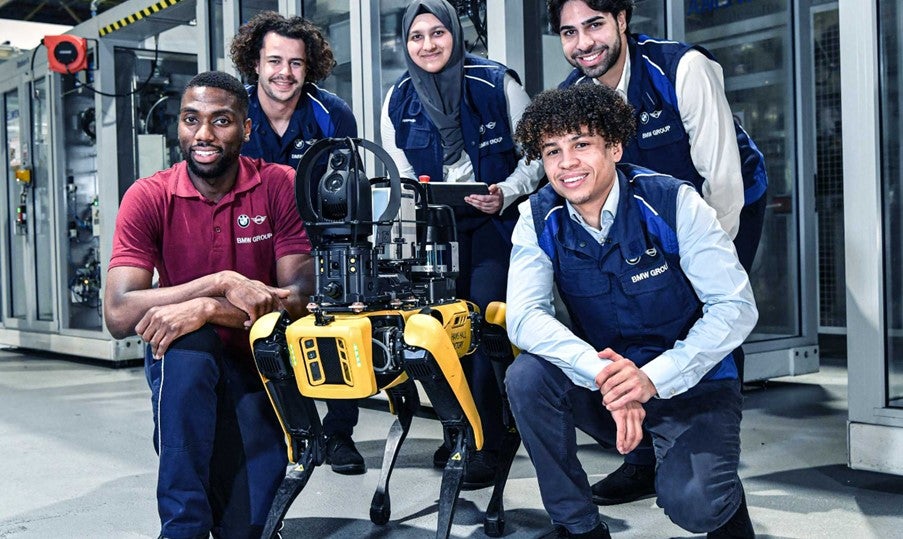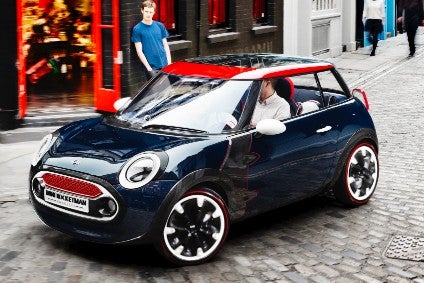
This is the second BMW Group feature on the topic of current and future models. The first looked at BMW brand passenger cars. Now, it is the turn of Mini, Rolls-Royce and a joint venture Chinese brand, Zinoro. The third feature will concentrate on BMW SUVs and the fourth will examine the brand’s electric models.
Mini
Mini, which like BMW, has its headquarters in Munich, is headed towards having five or perhaps more key models, or, as its executives curiously call them, ‘Superheros’. The division has some large question marks over its future, both in terms of where its main production plant will be, and what kinds of models will make up the future range.
Will VDL’s NedCar factory be expanded to take on more production so as to lock in euro zone manufacturing and remove exchange rate risk once the UK exits the EU in 2019? Or might BMW instead transfer build of Minis out of England and into Germany for the same reason? At the moment, nothing has been announced, but the rumours have been swirling for many months.
The future of Mini’s Cowley and Swindon plants might be up in the air – the newer Hams Hall engine factory is thought to be safer – yet BMW must soon decide where it will invest for the manufacture of certain future models. It may even send more work to Magna Steyr as an interim measure: the Graz works in Austria built the R60 Countryman and R61 Paceman until the fourth quarter of 2016.
As of now, there are three core Mini models: the B segment three-door and five-door hatchbacks plus the Convertible; the Clubman estate; and the Countryman crossover.
How well do you really know your competitors?
Access the most comprehensive Company Profiles on the market, powered by GlobalData. Save hours of research. Gain competitive edge.

Thank you!
Your download email will arrive shortly
Not ready to buy yet? Download a free sample
We are confident about the unique quality of our Company Profiles. However, we want you to make the most beneficial decision for your business, so we offer a free sample that you can download by submitting the below form
By GlobalDataBMW continues to look hard at the A segment and from time to time, there are whispers out of Munich about a car which will be only slightly larger than the original Mini from the 1950s. As of now, and whilst not confirmed for production, such a vehicle might well be once more in the planning stages.
The Rocketman concept, which debuted at the Geneva motor show in March 2011, was the inspiration behind a possible rival for the Fiat/Abarth 500. A second Rocketman prototype was announced in June 2012 and displayed at the London Olympic and Paralympic Games in July/August/September 2012.
Any future A segment model for Mini would have to be a joint venture with another manufacturer, BMW Group’s then CEO Norbert Reithofer stated in a May 2014 interview. In January 2015 there were media reports claiming BMW was looking to expand its alliance with Toyota over the possible joint development of a new small car project, thus potentially resurrecting the idea of a Rocketman/Mini Minor. The latest information seems to indicate that the partners are seriously considering an A segment project but any production cars which might eventually appear are probably as far off as 2020 or 2021.
Size wise, the entry level for the current Mini range consists of the B segment F55 (five-door), F56 (three-door) and F57 (convertible).
Production of BMW’s third generation Mini commenced in England in November 2013. The three-door hatchback was the first body style (LA & Tokyo motor show premieres in November), and was followed by a concept preview of a then future Clubman (wagon) at March 2014’s Geneva motor show.
The three-door was the first car for BMW Group’s UKL1 platform. It went on sale in European markets during the first quarter of 2014. The three-door (‘Hatch’ in Europe, ‘2 door Hardtop’ in North America) is 98mm longer, 44mm wider and 7mm higher than BMW Group’s second generation equivalent. The wheelbase for the Hatch is 28mm longer while the boot volume rose by 51 litres to a still fairly squeezy 211 litres.
The three-door was launched as three turbocharged model variants: Mini Cooper with a new 100kW/136bhp 1,499cc three-cylinder engine, Cooper S with a 141kW/192bhp 1,998cc four-cylinder engine and Cooper D with a new 1,496cc three-cylinder diesel (85kW/116bhp). A six-speed manual transmission is standard, with optional six-speed automatic transmission or sports automatic transmission.
Continental supplies the turbocharger for the 1.5-litre engine and this has an aluminium housing, which was an industry-first (according to a just-auto.com report published on 8 January 2015). The One and One D were added in the second half of 2014, powered by 75kW/102bhp 1,233cc three-cylinder turbo petrol and 70kW/95bhp 1,496cc three-cylinder diesel engines respectively. The One and One D had their debuts in three-door form at the Geneva motor show in March 2014.
The Mini John Cooper Works concept previewed a production model of the same name when it debuted at the Detroit auto show in January 2014. The production JCW then premiered at the 2015 Detroit show. It went on sale across Europe from May 2015.
The first five-door Mini (‘4 door Hardtop’ in North America, and new there for the 2015 model year) was announced in June 2014. Its boot has a volume of 278 litres, up 67 litres or around 30 per cent compared to the 3-door Hatch, while rear seat occupants are said to have 72mm more legroom as well as extra headroom compared to the Hatch. Also, the rear bench seats three. At 3,982mm long, the five-door is 161mm lengthier than the three-door.
The arrival of the five-door signalled the launch of an additional variant, the Cooper SD (170hp 2.0-litre diesel with 360Nm of torque). The Mini with extra doors is manufactured at Cowley, which the company calls ‘BMW Plant Oxford’. Its motor show debut was in Paris in October 2014.
Following the July 2012 sale agreement of Mitsubishi Motors’ NedCar plant in The Netherlands to Dutch bus firm VDL, a deal was struck with BMW Group for assembly of Mini vehicles. The first model, the three-door hatchback, has been assembled at Born since August 2014. The Convertible is made only at the Dutch plant; i.e. it is not manufactured in England. The open-top car had its world premiere at October 2015’s Tokyo motor show.
As for potential manufacturing in China, BMW Group and Brilliance Auto may eventually build Minis at their Tiexi plant in Shenyang but there has no official announcement about this.
Facelifts for the F55, F56 and F57 are due in showrooms from the final quarter of this year. These cars will likely have their world debuts at the Frankfurt IAA in September, though the convertible might be held over until the LA show in November. Replacements should enter production in late 2022 and these will likely be based on a second generation of the UKL1 architecture.
A ‘Traveller‘ derivative to compete with the Ford B-MAX and others in that segment was said to have been planned at one time. This was reportedly codenamed F58 but the shrinking of that segment in Europe is said to have made BMW shelve this project. The same may also apply to what could have been a roadster, the F59 Superleggera. The old-shape Mini roadster was axed in 2015 after fewer than three years of production and disappointing sales.
The proposed rival for the Mazda MX-5 had been expected to share some of the styling of the Superleggera Vision. A concept with that name was revealed at the Villa D’Este Concorso d’Elegazanza in May 2014. There was a raised spine on the bootlid and the tail lights were styled to resemble a section of the UK’s Union Flag.
The Superleggera, should it be resurrected, would be the replacement for the Mini roadster from 2020 onwards. BMW Group may well extend its collaboration with Toyota as a means of making the business case for this car. A four-door B- or C segment sedan rather than a roadster may instead be the priority for expanding Mini brand sales. Such a body style would in theory work well in both China and the USA.
Returning to current models, in the C segment, there are now two vehicles: the Clubman, an estate; and the Countryman, a crossover.
The Clubman was announced by BMW in June 2015 and shown to some journalists at that month’s Goodwood Festival of Speed. While images and specs were published, the car did not have its public debut until three months later at the Frankfurt IAA.
The production model had been preceded by the Clubman concept, a design study which was exhibited at the 2014 Geneva motor show. This prototype was 26cm longer and 17cm wider than the then current Clubman. It also had frameless doors and there were four of these, rather than the now previous model’s three. It retained the two vertically-hinged tailgate doors. BMW Group quoted the near-production concept’s dimensions as follows: length, 4,223 mm; width, 1,844 mm (not including mirrors); height, 1,450 mm. As this was before the arrival of the second generation Countryman, this made it the then longest Mini yet.
The Clubman offers the choice of three- and four-cylinder engines, as well as six-speed manual and automatic gearboxes. An eight-speed automatic is an alternative for certain cars with four-cylinder engines.
The initial model line-up was as follows:
- Cooper D (110kW/150hp & 330Nm 1,995cc four-cylinder diesel turbo)
- Cooper Clubman (100kW/136hp & 220Nm 1,499cc three-cylinder petrol turbo)
- Cooper S Clubman (141kW/192hp & 280Nm 1,998cc four-cylinder petrol turbo)
The Clubman went on sale across Europe from September 2015, and in North America from January 2016 for that region’s 2016 model year. Only the Cooper and Cooper S were initially offered by the US importer, though this changed from the 2017 model year when the John Cooper Works became available. That variant’s world debut was at the 2016 Paris motor show. It went on sale in relevant markets from December 2016, powered by a 231hp version of BMW’s 1,998cc four-cylinder petrol engine.
ALL4 All-wheel drive variants were announced in January 2016 and became available in European markets from April 2016.
BMW will likely facelift the F54 Clubman in 2019 and launch a next generation model in 2023.
The other C segment Mini is the Countryman, which has been reinvented as a crossover-SUV for its second generation.
Countryman 2 was announced to the media in October 2016, a few weeks ahead of its debut at the Los Angeles auto show. It is built in the Netherlands by VDL, not in Austria by Magna Steyr, as was the case with the old model. There will also be assembly at relevant plants. The latest car replaced not just the first generation Countryman, but the slow-selling Paceman too.
F60, which is 20cm longer than R60, is the largest Mini yet. The luggage compartment volume is 450 litres and can be extended to a total of 1,309 litres. This constitutes a maximum and much needed increase of 220 litres compared to the predecessor model.
The Countryman went on sale across Europe from February 2017.
In addition to a PHEV variant, there are four initial variants:
- Cooper Countryman: 100kW (136hp) & 220Nm 1,499cc three-cylinder petrol
- Cooper S Countryman: 141kW (192hp) & 280Nm 1,998cc four-cylinder petrol
- Cooper D Countryman: 110kW (150hp) & 330Nm 1,995cc four-cylinder diesel
- Cooper SD Countryman: 140kW (190hp) & 400Nm 1,995cc four-cylinder diesel
The Cooper Works Countryman premiered at the Shanghai motor show in April, going on sale just a few weeks later. The JCW is powered by a 170kW (231hp) and 350Nm 2.0-litre four-cylinder petrol turbo.
The Countryman is due to be facelifted in 2020. The third generation model should be on sale from 2023.
A five-door Coupé may be an additional body style to come, BMW Group potentially mimicking its strategy of creating a higher margin model as per the imminent X2 versus the BMW X1 original.
Electric Minis
Apart from badging and a charging port on the front wing, the just-launched Cooper S E Countryman ALL4, a plug-in hybrid, looks just like the Countryman. Its powertrain is BMW Group’s 100kW (136hp) 1,499cc three-cylinder petrol engine plus one rear-mounted electric motor and a 7.7kWh lithium ion battery pack. Drive to the front wheels is via a six-speed Steptronic transmission, while the 65kW (88hp) motor sends torque to the rear axle. System power is 165kW (224hp) with total torque of 385Nm. Average fuel consumption is 2.1 litres per 100 kilometres and the CO2 figure is 49 grams per kilometre (EU test cycle figures for plug-in hybrid vehicles). The car can run for up to 40km on its battery pack, with a top speed in EV mode of 125km/h.
Production of the PHEV Mini takes place in the The Netherlands. This commenced in March and the car went on sale from May. Like other Countryman variants, the Cooper S E is due to be facelifted in 2020. Its replacement should then appear in late 2023.
BMW Group is hedging its bets with a Mini electrification strategy. Speaking in September 2016, Harald Krüger said an electric Mini was under development and due for release in 2019. The CEO did not state where it would be built. Why BMW would need almost three years to develop a fully electric Mini is not clear. Production will likely be at NedCar in Born.
The electric car is expected to be based on the three-door Mini hatchback. Its model name will likely be Cooper E, which was also what the brand’s first low scale production plug-in was called. BMW USA leased 500 units of this car to customers in three states from April 2009. Cars were also tested in the UK, with these handed back to BMW in March 2011. The Mini E’s bulky lithium-ion battery pack was supplied by Taiwanese firm E-One Moli Energy Corporation.
Rolls-Royce
RR4, the Ghost, is easily the oldest current Rolls-Royce. Assembly of this model at the Goodwood plant got underway back in 2009 and the life cycle will probably be ten years. The Ghost, while smaller than the out of production Phantom, is nevertheless a huge car, having a 3,295mm wheelase. The world premiere took place at the Frankfurt motor show in September 2009. The car went on sale in the UK, its first market, three months later.
The Ghost is powered by a 420kW (563bhp) turbocharged 6,592cc V12 engine, though a limited edition V-Specification variant built between January and June 2014 gained 22kW (30hp). The only transmission is an eight-speed automatic supplied by ZF.
Bodies are manufactured in Germany by BMW with final assembly at Goodwood on a dedicated line. The car’s air suspension contains several Wabco components and systems, the supplier revealed in April 2010.
An additional variant, the Ghost Extended Wheelbase, had its global premiere at the Shanghai motor show in April 2011. The stretched Ghost went on sale in the UK in September 2011. A facelift for both bodies premiered at the Geneva motor show in March 2014. The next Ghost will use a fresh platform. For more on this architecture, see the sections concerning the Phantom VIII and Culinan below.
There are two other cars which are closely related to the Ghost. The first of these is RR5, the Wraith. This huge coupé had its global debut at the Geneva motor show in March 2013. It went on sale from the fourth quarter of that year. The car is powered by a 465kW 6,592cc turbocharged V12 driving through an eight-speed automatic gearbox. Torque is quoted as 800Nm. Curb weight is 2,435kg. There should be a facelift in 2019 and a replacement in 2023.
The Wraith can be thought of as a two-door Ghost. RR6, meanwhile, is the Dawn, a convertible version of the Wraith so it also uses the outdated BMW E65 platform. The car’s world premiere was at the Frankfurt IAA in September 2015.
Despite its 5,285mm length, the car is just a 2+2. Its engine is a 420kW version of the 6.6-litre biturbo V12 which produces 780Nm of torque. The car weighs a phenomenal 2,560kg and the CO2 average is 330g/km. There may be a power hike to come and then a facelift in 2021. The next generation Dawn is due in 2026.
The final Phantom VII was assembled at Goodwood in January so Rolls-Royce presently does not have a range topping sedan.
The BMW division continues to drip feed various snippets about the Phantom VIII. The main news is that this will be the first vehicle to use the brand’s forthcoming aluminium spaceframe architecture. The car will be revealed on 27 July but production is not expected to commence until October.
BMW has been remarkably good at keeping details of the VIII secret. However, it is known that the car will have four-wheel steering and be powered by a forced induction V12. This is said by insiders to be a new engine rather than a development of the aged 6.6-litre unit.
The Phantom was built for fourteen years but given the changes which are seeing the car industry reinventing itself at a rapid pace, it seems unlikely that the VIII will stay in production for as long as its predecessor did. Expect a PHEV or EV variant to be added by 2020, possibly as a stand alone model with its own body and name.
In October 2013, Torsten Muller-Ötvös, the head of BMW Group’s Rolls-Royce division, told the media that a project to investigate the viability of a future SUV was underway. This followed the news that a Bentley SUV was being developed.
The car was confirmed as being a new development project (RR31) in February 2015. A PHEV powertrain should be available at either launch in 2018 or within the following 12-24 months.
The project name, Cullinan, is the same as the world’s largest discovered diamond.
In March 2015, Muller-Ötvös told the media that the brand’s first SUV will have aluminium body panels and that it would also use a new aluminium spaceframe, adding that this will not be shared with BMW. This platform will then be modified and used for other future Rolls-Royce models. The Phantom VIII is said to be sharing the full sized version of this architecture, with replacements for the Ghost, Wraith and Dawn to be based on a related platform.
The Cullinan will likely be facelifted in late 2023 and replaced in the final quarter of 2028.
Rolls-Royce should have another strong year, following the 4,000+ deliveries in CY2016. Last year’s tally was a six per cent year on year gain on 2015 and the second best 12-month period in the brand’s 113-year history. The addition of the Cullinan and the first full year of Phantom VIII sales means that, as long as the world’s main markets remain strong, a fresh record could be set in 2018.
Zinoro
This brand is marketed only in China and is a JV between BMW Group and its local partner, Brilliance Automotive. Zinoro has only one model, the 60H. This is based on the long-wheelbase BMW X1.
The Zinoro Concept Next from the 2015 Shanghai motor show provided some of the production model’s styling cues. The 60H replaced the lease-only Zinoro 1E. And while the 1E was an EV, the 60H is a plug-in hybrid, powered by a 1.5-litre turbo three-cylinder petrol engine and an electric motor. Production of the 60H commenced in February 2017. This SUV is manufactured by Brilliance BMW Automotive (BBA) at the Tiexi plant in Shenyang.
Zinoro’s only other model was the 1E, production of which ceased during the fourth quarter of 2016. BBA’s first co-developed and built EV was, like the 60H, based on the X1 but in the case of the iE, the donor model was the first generation of BMW’s smallest SUV. The partners also decided that a PHEV powertrain would have a better chance of success than a pure EV, which explains the change over the 1E.
As sales of the 1E were tiny and those for the 60H are only moderately better, BBA may well simply continue selling only the 60H for a few years more before phasing out the Zinoro brand. On the other hand, pressure from the authorities in Liaoning, the province where BBA is based, to continue production and marketing of Zinoro vehicles, could see the ‘local’ New Energy Vehicle brand expanded slightly. The most likely additional model would be based on an electric version of the forthcoming G01 BMW X1. BBA would potentially manufacture the X3-based Zinoro at its Da Dong plant in Shenyang.
Future model plan reports for other manufacturers can be viewed in the OEM product strategy summaries section of just-auto.com.
Future product program intelligence
Additional data on vehicle lifetime and future product plans, such as model code names, are available in PLDB from QUBE.



